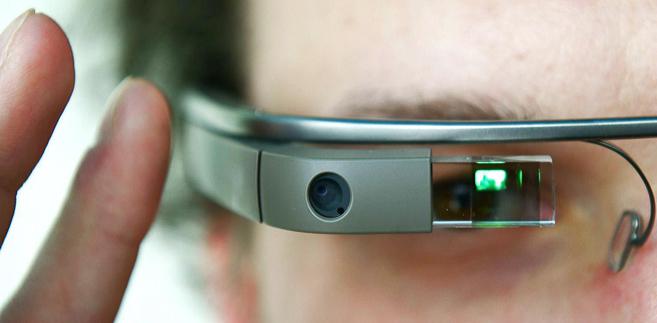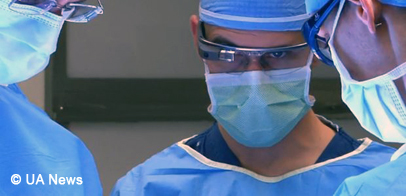

ICTs and, specifically, Google Glass technology, represent an extraordinary paradigm shift for the transmission of information. In the field of dentistry, the use of these technologies could mean a major advance from the vantage point of training methods for implant dentistry and the planning and execution of cases.
Google Glass was developed by Google and consists of an optic head-mounted display with a small screen in the right upper outer quadrant of the visual field, where information of interest to the user is projected. The device has a camera, GPS, microphone, and display that connect to the Internet, and it can take photos and videos, and use many applications, including the Google system for Hangouts (video conferencing). It is activated by verbal instructions from the user, which are recognized by the device through laryngeal vibrations and sound transmission through bone conductivity.
Thus, users can perform any activity while searching for information online using verbal instructions.

In the field of dentistry, some interventions have been conducted using GG. The advantages that this technology can offer are extraordinary and varied. They can be grouped into:
1. Improvements in implantology training
2. Improvements in case planning
This new technology is capable of providing solid training for implant dentists worldwide. We are not referring specifically to training in a university classroom setting, we’re talking about comprehensive training, as this technology allows you to see, for instance, a live surgical intervention as the surgeon sees it.
We have already seen broadcasts of surgical interventions through Google Glass in audiovisual media. However, we can go even further: just think of something students can touch or experience. One possibility could be that a doctor about to perform surgery and wearing a Google Glass device can be connected with a student wearing GG, thus allowing the student to directly view what the surgeon is doing with their own eyes (on the device display).
Another possibility is that a student preparing for a case can, thanks to GG, follow
in detail all the steps that the doctor indicates. The device can even be used to consult files, other doctors, or additional material “in situ” while leaving the hands free to work.
![]()
This is valuable “hands on” training in terms of concentration and the opportunity to acquire knowledge through direct contact with a professional and, eventually, with an auditorium full of future dentists anywhere in the world. This system undoubtedly represents an improvement in the use of resources and time in the task of acquiring practical knowledge, also offering the capability of holding discussions, asking and answering questions, and so on. This hands-on knowledge involves concentration, practice, and observation.
The GG system allows us to control the device with verbal commands and to obtain relevant case information, such as panoramic radiographs, additional materials, and other, in addition to consult with other specialists and send photos, videos, and other without distraction in our field of vision and hands-free. This may be very significant in terms of case planning. Why not develop a device that covers all the agents in the digital workflow? Such a device would have all the information available for planning each individual case, could be connected to the prosthetic to assess the characteristics of the work, and could also be in contact with the milling center to answer
other questions. How would it be used during surgery? The work would have even more guarantees of success. Such an all-in-one device would offer total freedom.
The use of technologies like this would mean the development of yet another step in the digital workflow. We are educating in an experience-based digital environment. The workflow is all connected through a single device.
We have described two of the many benefits that this device could offer. In reality, we are confronting new technological opportunities, and we in the industry should reflect on all the possibilities that are opening up and will open in the near future.